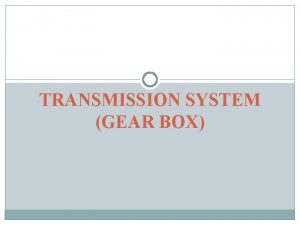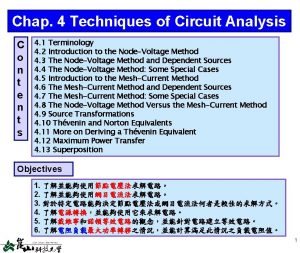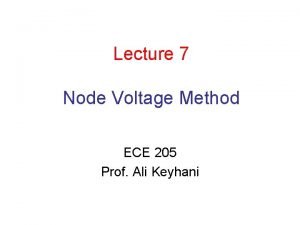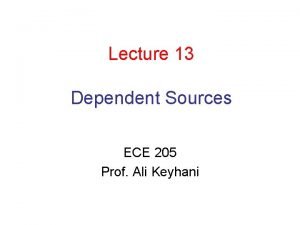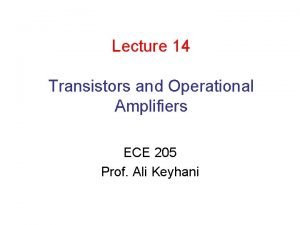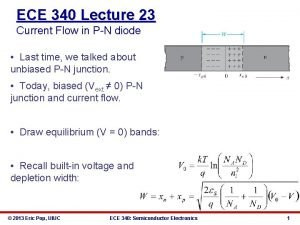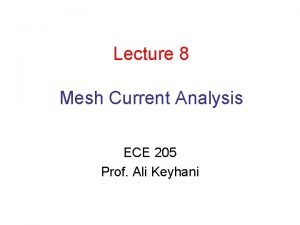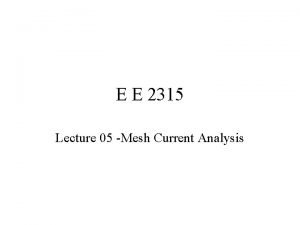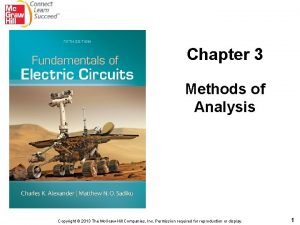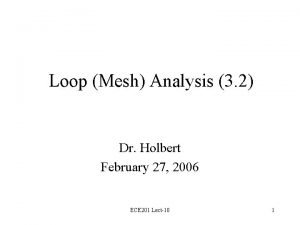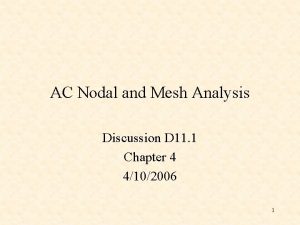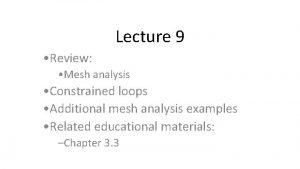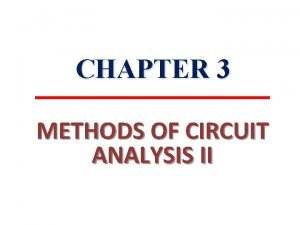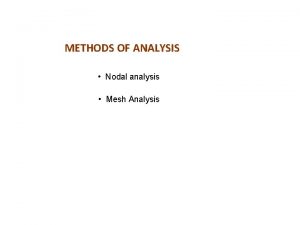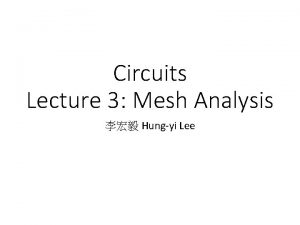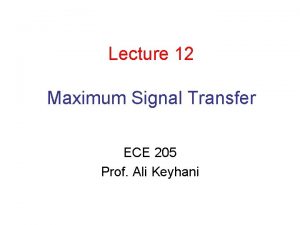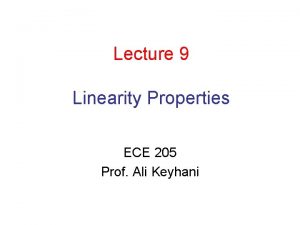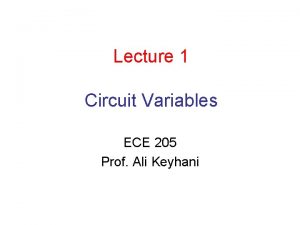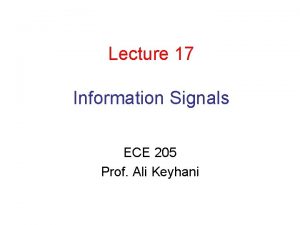Lecture 8 Mesh Current Analysis ECE 205 Prof















- Slides: 15

Lecture 8 Mesh Current Analysis ECE 205 Prof. Ali Keyhani

Mesh Current Analysis • Restricted to planar circuits • The mesh current are defined for each mesh and a reference direction is assigned to them • Example: meshes in a planar circuit:

Mesh Current Analysis • If Kth two-terminal element is contained in meshes X and Y, then the mesh current is defined as the difference of the two mesh currents: • If the element is contained in only one mesh then:

Example 1 Source: textbook Mesh currents are i. A=5, i. B=5 A, i. C=-3 A, find the element currents i 1 to i 6.

Example 1 Solution:

Formulating Mesh Current Equations • Step 1: Identify a mesh current for each mesh and write element voltages in terms of mesh currents • Step 2: Write the KVL equations in terms of the element voltages around every mesh of the circuit • Step 3: Use the element i-v relationship and KCL to express the element voltages in terms of mesh currents • Step 4: Substitute the element constraints from step 3 into the KVL equations in step 2 and solve the resulting equations to find the unknown mesh currents

• The planar circuit can be analyzed using the mesh current method.

Writing node-voltage equations by inspection • The mesh equations have a symmetrical pattern that is similar to the symmetry observed in node equations • The voltage across resistance in mesh A consists of the following terms: 1. i. A times the sum of resistances in mesh A. 2. -i. B times the sum of resistances common in mesh A and B and similar terms for any mesh adjacent to mesh A • These rules make writing the mesh current equations easy and without need to write the element equations

Example 2 Write the mesh current equations by inspection

Example 3 Find the current in the 2Ω resistor of the given network.

Example 3 Solution:

Mesh Equations with Current Sources • There are three ways to write mesh equations in presence of current sources: 1. Current source is in parallel with a resistor: it can be converted to a voltage source 2. Current source is contained in only one mesh: That mesh current is the source current and is known. One mesh equation is eliminated

Mesh Equations with Current Sources 3. Current source is contained in two meshes: a supermesh is created and the mesh equations written around the supermesh using both mesh currents. The equation of the supermesh is added to complete the set of equations as:

Example 4 Determine the currents I 1 and I 2 in the given resistive circuit by mesh analysis.

Solution: The current source is transformed to voltage source for the mesh analysis as shown in Figure.
 Kcl mesh analysis
Kcl mesh analysis Constant mesh gear box
Constant mesh gear box Source transformation
Source transformation Node voltage method
Node voltage method Node voltage analysis with dependent sources
Node voltage analysis with dependent sources Ece 205
Ece 205 Ece 205 uiuc
Ece 205 uiuc Ece 205
Ece 205 Supermesh analysis examples
Supermesh analysis examples 01:640:244 lecture notes - lecture 15: plat, idah, farad
01:640:244 lecture notes - lecture 15: plat, idah, farad Find v
Find v Mesh analysis matrix method
Mesh analysis matrix method Loop mesh
Loop mesh Mesh analysis by inspection
Mesh analysis by inspection Mesh analysis
Mesh analysis Mesh analysis
Mesh analysis

